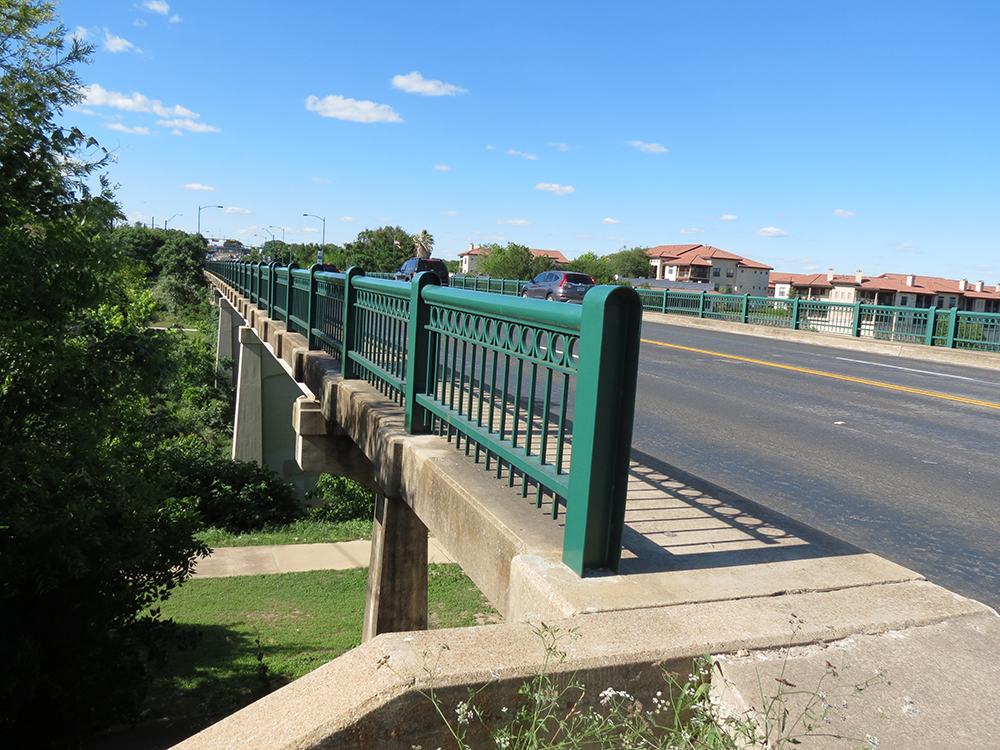Austin Avenue Bridges: Public Comment on Options by May 26
 The City of Georgetown is seeking public input on options for repairing or replacing the Austin Avenue Bridges that span the north and south forks of the San Gabriel River. Public comments should be submitted on or before Friday, May 26 in order to be included in the official public record for the public open house held on May 11.
The City of Georgetown is seeking public input on options for repairing or replacing the Austin Avenue Bridges that span the north and south forks of the San Gabriel River. Public comments should be submitted on or before Friday, May 26 in order to be included in the official public record for the public open house held on May 11.
Deficiencies in the bridges that were built in 1940 were noted in Texas Department of Transportation inspection reports in 2013 and 2015. Since then, a project team has been studying the bridges and gathering public input on options to address the deficiencies. The project team includes City staff as well as firms with expertise in bridge engineering, historic resources, environmental impacts, landscape architecture, and community involvement.
The goals of the bridge project are to address the structural deficiencies of the bridges, improve safety and mobility, provide safe turning movements for traffic, and provide crossings that are safe for pedestrians, bicycles, and other non-vehicular traffic.
The Austin Avenue Bridges project team developed a list of 12 preliminary alternatives for the bridges representing a range of reasonable concepts. Based on feasibility and impacts to ecological, community, and historic resources, the project team refined the list to five primary alternatives for the bridges, which are listed as below.
During the construction phase in all of the options, one lane of traffic in each direction would be maintained. Options including bearing replacement would include nightly closures of the bridges.
1. No build: This option includes some maintenance work, but does not include replacement of the bearings or the concrete deck on the bridges. This option does not meet the goals of the project, but is required by the federal environmental review process. Cost estimate: $400,000.
2A. Pair of one-way bridges: This option would rehabilitate the existing bridges for two southbound traffic lanes and a turn lane and construct new 40-foot wide bridges for northbound traffic to the east of the existing bridges. The new bridges would include two vehicular traffic lanes and a 10-foot-wide pedestrian and bicycle lane. The bearings and the concrete bridge deck would be replaced on the existing bridges. This option meets most of the goals of the project. The construction duration estimate is 18 to 22 months. Cost estimate: $13.1 million. The estimated service life of this option is 30 to 50 years.
6A. Rehabilitation with pedestrian bridges: This option would replace the bearings and concrete bridge deck on the existing bridges and construct new 10-foot wide pedestrian bridges to the east of the existing bridges. This option meets most of the goals of the project except for turning or mobility improvements for vehicles. The construction duration estimate is 16 to 18 months. Cost estimate: $7 million. The estimated service life of this option is 20 to 40 years.
7A. Rehabilitation and widen bridges: This option would replace the bearings and concrete deck on the existing bridges and add new 33.5-foot wide bridge sections to the east of the existing bridges. The new sections would include a 10-foot wide pedestrian and bicycle lane. A vehicular turn lane would be added on the existing bridges. This option meets all the goals of the project. The construction duration estimate is 16 to 18 months. Cost estimate: $12.7 million. The estimated service life of this option is 30 to 50 years.
8. Full replacement: This option would demolish the existing bridges and construct new bridges with a vehicular turn lane and a 10-foot wide lane for pedestrians and bicycles. This option meets the goals of the project, but does not preserve historic features of the existing bridges. The construction duration estimate is 18 to 22 months. Cost estimate: $15.7 million. The estimated service life of this option is 75 years.
Maps showing schematic design concepts for the five primary alternatives as well as display boards and other information on the project are available on the project website at on the Transportation website.
Public comment on these five alternatives can be sent to the Austin Avenue Bridges project team at austinave@georgetown.org.
Feasibility, engineering, historic, environmental, and community factors as well as input from the public, state agencies, and the Georgetown City Council will lead to further narrowing of alternatives for the project. Additional analysis will lead to a preferred alternative that will be presented at a fourth public meeting for the project expected in late 2017 or early 2018.









